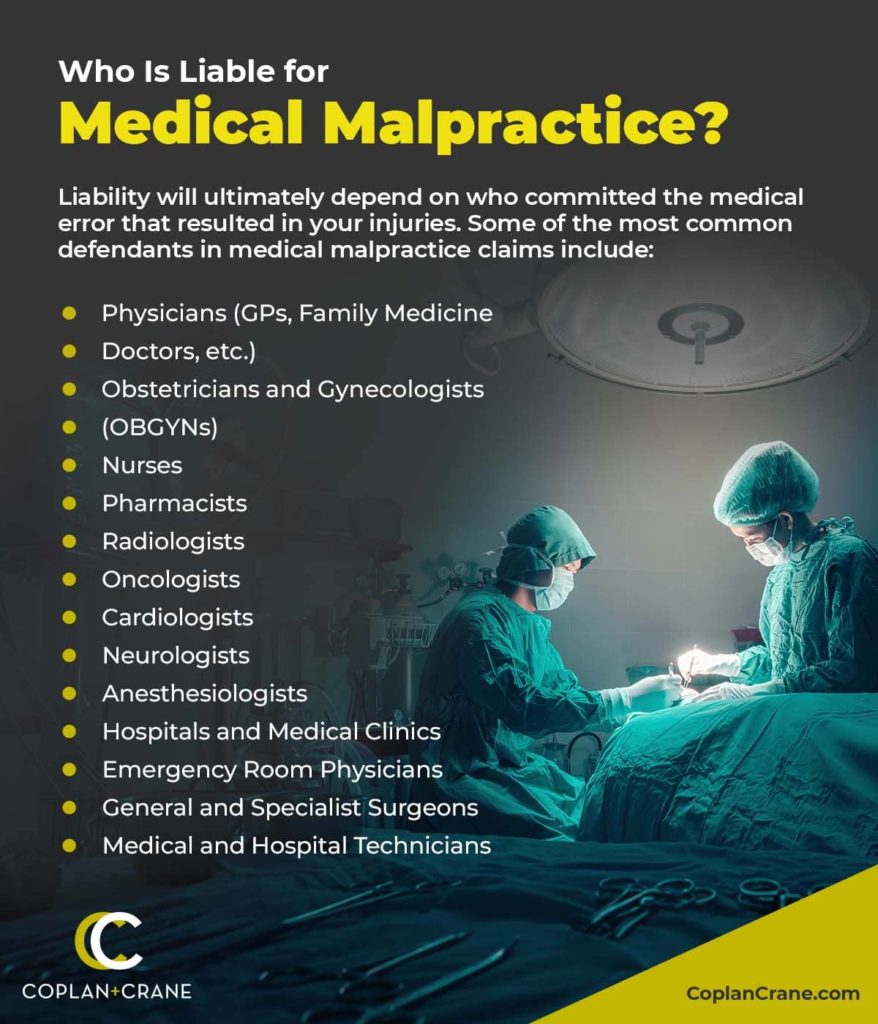Understanding medical malpractice is crucial for protecting patient rights. This article explores the definition of medical malpractice, highlighting common types such as misdiagnosis, surgical errors, and medication mistakes. It provides an overview of fundamental patient rights and outlines the legal recourse available to victims, including the importance of medical records and the statute of limitations for filing claims. Additionally, it offers tips for choosing a qualified malpractice attorney and explains the key elements required to prove negligence. The article also discusses the broader impact of malpractice on healthcare providers and institutions.
Join alijyun.com as we delve deeper into this topic.
1. Definition of Medical Malpractice: Explanation of what constitutes medical malpractice.
Medical malpractice occurs when a healthcare professional deviates from the accepted standard of care, resulting in harm to a patient. The standard of care refers to the level of care and skill that a reasonably competent healthcare provider would provide under similar circumstances. When this standard is not met, and a patient suffers injury or harm as a result, it can be considered medical malpractice.
This can involve various actions or omissions, such as incorrect diagnosis, improper treatment, or failure to perform necessary actions. For instance, if a doctor misdiagnoses a condition and the patient receives inappropriate treatment, this can lead to further health complications. Similarly, surgical errors, medication mistakes, and inadequate follow-up care can all constitute medical malpractice.
To establish a medical malpractice claim, it must be proven that the healthcare provider’s negligence directly caused the patient’s injury or harm. This requires demonstrating that the provider failed to act according to the accepted standard of care and that this failure resulted in significant damage to the patient.
2. Common Types of Medical Malpractice: Examples like misdiagnosis, surgical errors, and medication mistakes.

Medical malpractice can manifest in various forms, each carrying significant risks for patients. One common type is misdiagnosis, where a healthcare provider incorrectly identifies a patient’s condition, leading to inappropriate or delayed treatment. This can result in the patient’s condition worsening or becoming untreatable.
Surgical errors are another prevalent form of medical malpractice. These errors can range from operating on the wrong site or leaving surgical instruments inside the patient’s body to causing unintended damage to organs. Such mistakes often lead to additional surgeries, prolonged recovery, or even life-threatening complications.
Medication mistakes are also a frequent cause of medical malpractice claims. These errors include prescribing the wrong medication, incorrect dosage, or failing to consider potential drug interactions. Such mistakes can cause adverse reactions, exacerbate the patient’s condition, or result in new health issues.
Other types of medical malpractice include birth injuries, where negligence during childbirth leads to harm to the mother or baby, and anesthesia errors, which can cause severe complications or death if not administered correctly. Each of these types highlights the critical importance of adhering to the accepted standard of care to ensure patient safety and well-being.
3. Patient Rights Overview: Fundamental rights every patient should know.
:max_bytes(150000):strip_icc()/malpractice-insurance_final-2175f546cee84786bcfb014a03ee4a1b.png)
Every patient has fundamental rights that ensure they receive respectful and competent care. One of the most crucial rights is the right to informed consent. This means patients must be provided with all necessary information regarding their treatment options, potential risks, and benefits, allowing them to make knowledgeable decisions about their healthcare.
Patients also have the right to privacy and confidentiality. Healthcare providers must protect the privacy of patient information and ensure that medical records are kept confidential, only sharing information with authorized individuals.
Another important right is the right to receive care without discrimination. Patients should be treated with respect and dignity, regardless of their race, gender, religion, or socioeconomic status.
Additionally, patients have the right to seek a second opinion. If a patient is uncertain about a diagnosis or treatment plan, they can consult another healthcare provider to explore alternative options.
Lastly, patients have the right to file a complaint if they believe their rights have been violated or if they have experienced substandard care. This ensures accountability and encourages continuous improvement in healthcare standards.
4. Legal Recourse for Victims: Steps patients can take if they believe they’ve been a victim of malpractice.

Patients who believe they have been victims of medical malpractice have several steps they can take to seek legal recourse. The first step is to obtain and review their medical records. These records are crucial for understanding what happened and identifying any deviations from the standard of care.
Next, patients should consult with a qualified medical malpractice attorney. An experienced lawyer can provide guidance on the validity of the claim, the legal process, and the potential outcomes. They can also help gather necessary evidence and expert testimonies to support the case.
Filing a formal complaint with the appropriate medical board or regulatory body is another important step. This can lead to an investigation and potential disciplinary action against the healthcare provider.
Patients should also be aware of the statute of limitations, which sets a time limit on when a medical malpractice claim can be filed. Acting promptly is essential to ensure the claim is filed within this period.
Throughout the process, maintaining thorough documentation of all interactions, treatments, and outcomes is vital. This detailed record can strengthen the case and support the patient’s claims.
5. Role of Medical Records: Importance of maintaining accurate and complete medical records.
Medical records play a critical role in ensuring effective patient care and are essential in cases of medical malpractice. Accurate and complete medical records provide a detailed history of the patient’s health, treatments, and outcomes, enabling healthcare providers to make informed decisions and coordinate care effectively.
For patients, maintaining accurate medical records is vital for several reasons. Firstly, these records help track the progression of medical conditions and the effectiveness of treatments. This information is crucial for ongoing care and future medical decisions.
In the context of medical malpractice, medical records serve as key evidence. They document the treatments and procedures performed, the provider’s decisions, and any deviations from the standard of care. This information can be used to demonstrate negligence and establish a timeline of events, which is critical in legal proceedings.
Additionally, complete medical records help protect patients’ rights by ensuring transparency and accountability in healthcare. Patients have the right to access their medical records, review their contents, and identify any discrepancies or errors. This access is fundamental for seeking second opinions or pursuing legal action if necessary.

6. Statute of Limitations: Time limits for filing a medical malpractice claim.
The statute of limitations sets the time frame within which a patient can file a medical malpractice claim. This period varies by jurisdiction but typically ranges from one to three years from the date of the alleged malpractice or from when the patient discovered the injury. Understanding and adhering to this time limit is crucial for preserving the right to seek legal recourse.
Failure to file a claim within the specified time frame generally results in the case being dismissed, regardless of its merit. However, there are exceptions, such as cases involving minors or when the malpractice was not immediately discoverable. These exceptions may extend the filing deadline.
Patients should consult with a medical malpractice attorney as soon as they suspect malpractice to ensure timely action. An attorney can provide guidance on the specific statute of limitations applicable to their case and help navigate any exceptions. Promptly addressing potential claims is essential for gathering evidence, securing witness testimonies, and building a strong case.
:max_bytes(150000):strip_icc()/statute-of-limitations-4188623-v2-final-ea089264e0684f558b90b959d85adda9.png)
7. Choosing a Malpractice Attorney: Tips for finding and selecting a qualified medical malpractice lawyer.
Choosing a qualified medical malpractice attorney is crucial for effectively navigating a malpractice claim. Here are some tips to help you find and select the right lawyer:
Experience and Specialization: Look for an attorney who specializes in medical malpractice cases. Their experience and knowledge of medical and legal intricacies can significantly impact the outcome of your case.
Track Record: Research the attorney’s track record in handling medical malpractice cases. Consider their success rate and whether they have experience with cases similar to yours.
Referrals and Reviews: Seek referrals from trusted sources, such as friends, family, or other legal professionals. Additionally, read online reviews and testimonials to gauge the attorney’s reputation and client satisfaction.
Consultations: Schedule initial consultations with multiple attorneys. Use these meetings to discuss your case, ask questions, and evaluate their communication style and responsiveness. A good attorney should be willing to explain the legal process and provide honest assessments.
Resources and Network: Ensure the attorney has access to medical experts and other resources necessary for building a strong case. These experts can provide critical testimony and insights into the standard of care.
Fee Structure: Understand the attorney’s fee structure. Many medical malpractice attorneys work on a contingency fee basis, meaning they only get paid if you win your case. Clarify any additional costs or fees that may arise.
Comfort and Trust: Choose an attorney you feel comfortable with and trust. Your attorney will be your advocate, so it’s important to have confidence in their abilities and approach.
Taking these steps can help you find a skilled and dedicated medical malpractice attorney to effectively represent your interests.
8. Proving Negligence: Key elements required to establish negligence in a malpractice case.
Proving negligence in a medical malpractice case involves demonstrating several key elements. Firstly, it must be established that a duty of care existed. This means showing that the healthcare provider had a professional obligation to adhere to the accepted standard of care in treating the patient.
Next, it must be proven that this duty was breached. This involves demonstrating that the provider’s actions or omissions fell below the standard expected from a reasonably competent professional in the same field. Evidence of such a breach can include medical records, expert testimonies, and comparisons to established medical guidelines.
The third element is causation. It must be shown that the breach directly caused the patient’s injury or harm. This means linking the provider’s negligence directly to the adverse outcome. It requires a clear causal relationship between the provider’s actions and the patient’s damages.
Finally, the patient must prove damages. This involves showing that the negligence resulted in significant harm, such as physical injury, emotional distress, or financial loss. Evidence may include medical bills, treatment records, and testimony regarding the impact on the patient’s quality of life.
Together, these elements form the foundation for establishing negligence in a medical malpractice case, ensuring that all aspects of the claim are thoroughly addressed.
9. Impact of Malpractice on Healthcare: How medical malpractice affects healthcare providers and institutions.
Medical malpractice has significant repercussions for healthcare providers and institutions. For providers, being accused of malpractice can lead to increased stress, damaged reputations, and potential career setbacks. Legal battles and settlements can be financially burdensome, impacting their personal and professional lives. Even if a case is dismissed, the process can strain relationships with patients and colleagues, affecting overall job satisfaction and performance.
Healthcare institutions also face substantial consequences. Malpractice claims can lead to higher insurance premiums, increased operational costs, and a potential loss of patient trust. Institutions may need to implement additional training and quality control measures to prevent future incidents, which can divert resources and affect their financial stability.
Moreover, frequent malpractice claims can contribute to a defensive medicine practice, where providers order unnecessary tests or procedures to protect themselves from potential lawsuits, which can increase healthcare costs and impact patient care. Addressing and reducing malpractice claims is crucial for maintaining the integrity and efficiency
Understanding medical malpractice and patient rights is essential for ensuring proper care and legal protection. By recognizing common types of malpractice, knowing their rights, and taking appropriate legal steps, patients can safeguard their health and pursue justice if harmed. Accurate medical records, timely action within the statute of limitations, and selecting a skilled attorney are crucial in building a strong case. Addressing malpractice effectively helps improve healthcare standards and reinforces accountability among providers.
alijyun.com
alijyun.com

